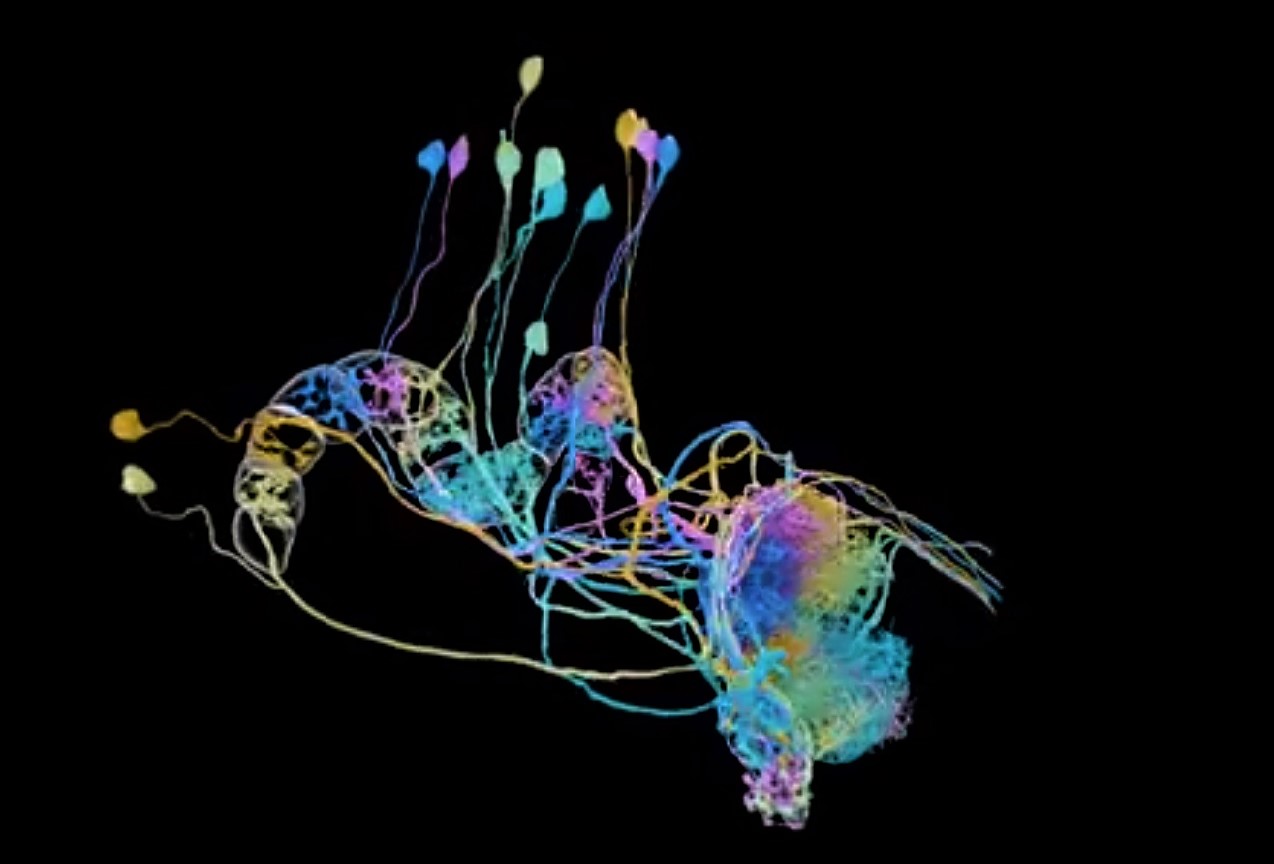
Late last year Google open-sourced technology that allows researchers to view petabyte-scale 3D models of brains in a web browser, with the Neuroglancer project used to build 3D models of a brain’s neural pathways in interactive visualisations.
Now Google AI and a research team from Janelia Research Campus in Virginia have released a highly detailed mapping of the neuronal connectivity of a fly’s brain, as well as the suite of tools they used for analysis and visualisations of the results.
The project represents what they describe as the “largest synapse-resolution map of brain connectivity that has ever been produced, in any species” — after extensive work that included slicing a fruit fly’s brain into separate 20 micron (0.02mm)-thick slabs.
“Each slab was then imaged at 8x8x8nm3 voxel-resolution using focused ion beam scanning electron microscopes customized for months-long continuous operation” with the raw data then stitched into a huge 26-trillion pixel 3D volume. The interactive data resulting from the project maps 25,000 neurons that form over 20 million connections.
DIY Neurologists, the World’s Your Oyster
The project is a not just a collaboration between tech giants like Google and academic research bodies, but represents a larger goal of creating an open source database and suite of tools that scientists can use to further their own research.
Neuroglancer, available on Github, is central to the project.
This software allows neurologists to create 3D models of a brain’s neural pathways in interactive visualisations. Working with a WebGL-based viewer for volumetric data, the software can display non axis-aligned cross-sectional views of volumetric data, 3D meshes and line-segment based models. Using machine learning and neural networks; scientists were able to map the brain’s wiring in a fruit fly and collate it into an interactive map using the Neuroglancer project software.
Michal Januszewski, Software Engineer in Google’s Connectomics division said : “To date, this is the largest synapse-resolution map of brain connectivity that has ever been produced, in any species. The goal of this project has been to produce a public resource that any scientist can use to advance their own work, similar to the fly genome, which was released twenty years ago and has become a fundamental tool in biology.”
New Tools and Datasets Rolled Out to Study Fly Brain
This data was no easy task to create: it has taken over a decade of development and research partnerships to not just create the reconstructed fly brain and render the visualisations interactive, but also correctly label individual synapses.
As Viren Jain, Technical Lead of Connectomics at Google notes: “After proofreading, the reconstruction was combined with automated synaptic detection in order to produce the hemibrain connectome. Janelia scientists manually labeled individual synapses and then trained neural network classifiers to automate the task.
“Generalization was improved through multiple rounds of labeling, and the results from two different network architectures were merged to produce robust classifications across the hemibrain.”
Another important tool released as part of the project is neuPrint, which comprises a set of tools that let researchers load and analyses neural connection maps data into a Neo4j database. In this database it is possible to perform queries on the connectivity, connection, strengths and morphologies of any specified neurons.
Researchers have begun using the dataset to understand of the fly’s nervous system.
“For example, a major brain circuit of interest is the “central complex” which integrates sensory information and is involved in navigation, motor control, and sleep.”






